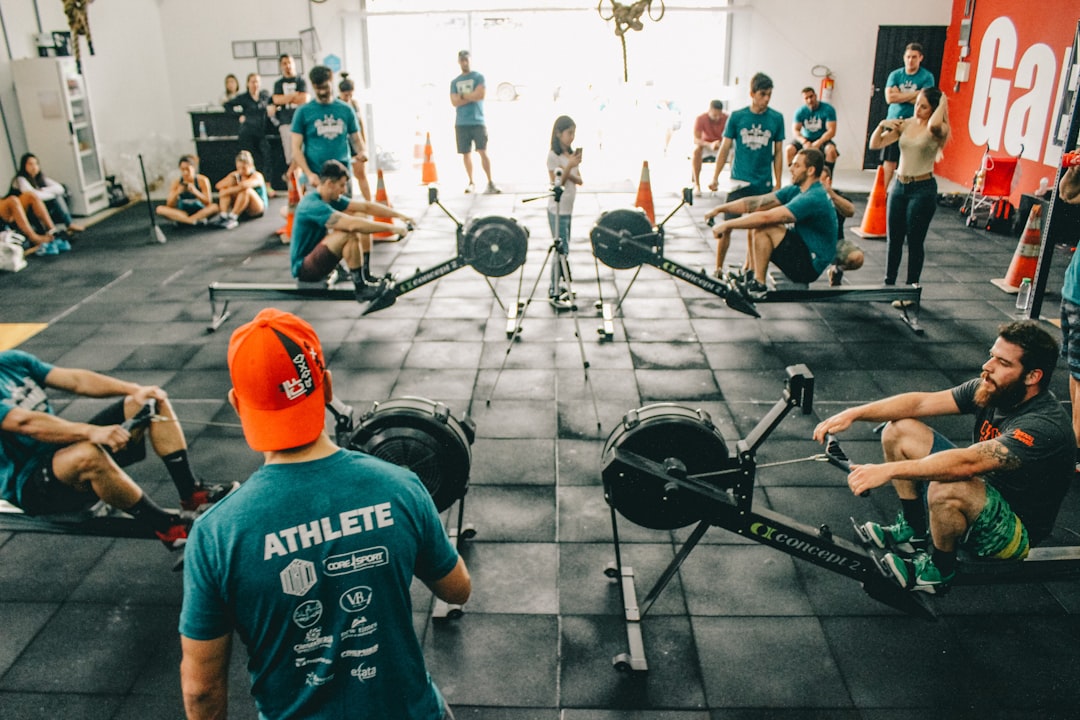


Training Terms:
Rep: Meaning repetitions. This is how many times you perform a single exercise in a row. Example: “Doing bicep curls for 12 reps at that weight”.
Set: A Set refers to a group of repetitions done without stopping. Example: “Do 2 sets of 10 reps”
Super Set: To do a combination of complimentary exercises done back to back in one “super set” with little to no rest. Example: A set of tricep overhead extension followed immediately by a set of tricep pushdowns with no rest between.
Drop Set: To do a combination of the same exercise done back to back with lighter weight on second set. Example: Doing dumbbell curls 10 reps with 20 pounds then without rest drop down to 10 pounds for 10 reps.
Circuit: A series of different exercises that are performed back to back with little to no rest. Example: a set or barbell curls then doing a set or lat pulldowns then a set of bench press and so on.. with little or no rest between.
Pyramiding: Doing sets of downward or upward amount of reps or weight with normal rest between sets. Example: 4 sets of side laterals with 12-10-8-6 reps with progressing to heavier weight each set, or 4 sets of side laterals with 6-8-10-12. reps with progressively lighter weight each set
Intervals: When you train at a low intensity for a period of time, followed by a high intensity or vice versa. Example: An example would be 1 minute of high-intensity exercise followed by 2 minutes of low-intensity exercise and alternating that several times for 15-30 minutes. Example: Jumping jacks for 1 minute followed by 2 minutes of walking.
Tabata: Is a form of interval training that involves doing an exercise for 20 seconds and the resting for 10 seconds.
HIIT: (High Intensity Interval Training) alternating short sets of intense anaerobic exercise with less intense recovery periods, until too exhausted to continue. Workout usually last lest than 30 minutes
Resistance Training: Any type of exercise that involves resistance. Example: Barbell curls.
Cross-training: Cross training is the action or practice of engaging in two or more sports or types of exercise in order to improve overall fitness. Example: running one day swimming the next and maybe doing stair master the third day.
Plyometrics: Exercises that require explosive movements. Example: jump squats.
Negatives: When the muscle lengthens during an exercise, called an eccentric contraction. A very effective technique for building muscle. Example: Doing bench press with a heavier weight when a spotter assists you with the press but you control the weight on the way down.
Recovery: The rest between exercises.
Compound exercises: Exercises that use more groups of large muscle mass. Example: squats, bench press, deadlifts etc…
Isolation exercises: Exercises that engage a single muscle. Example: Concentration curl.
One Rep Max: The maximum amount of weight one can lift for a single rep.
Cardio: Running, biking, swimming, or any activity that involves raising and sustaining the heart rate.
Calisthenics: Body weight exercises like pushups, pull-ups, dips, etc…
Functional training: Compound or multi-joint exercises or movements used to prepare the body for everyday life. Example: Multi-directional lunges

Equipment and other gym terms:
Delayed Onset Muscle Soreness: Is the pain and stiffness felt in muscles several hours to days after unaccustomed or strenuous exercise.
Maximum Heart Rate: This is used when determining your training zone. 220 – your age = Max heart rate.
Target Heart Rate: A good target heart rate for vigorous training is 70-85% of your maximum heart rate. Example: 220 – age X .75 = Target heart rate.
BMR: Basal Metabolic Rate, the amount of calories you burn at rest.
Active recovery: Still being active, but not at an intense pace.
Spot: When someone assists another person with an exercise.
Kettlebell: Cast iron weight equipment in the shape of a bell.
Medicine ball: Firm, weighted ball used for throwing and catching with resistance.
Foam roller: A long cylinder made of foam used for soft tissue massage.
Elliptical Trainer: Cardio machines that create a range of motion that follows an elliptical pattern.
Selectorized Machines: Weight machines where you can easily “select” a weight by inserting a pin in the weight stack.
Bar: A long straight bar (typically 45 lbs) used to put plate weights, usually used for squatting and bench press.
Curl Bar: The curved bar, known as the EZ Curl, typically used for bicep curls.
Collar: The attachment that secures the plate weights on a barbell or curl bar so the weight doesn’t slip off.
Free Weights: Typically refers to dumbbells & barbells.
Plates: The round weights you place on the end of bars.
Cables: A pulley system attached to various machines and workout systems.
Form: The act of performing an exercise in the appropriate way.
Work In: When someone ask to use the same free weights or machine as you.
Core: The central most part of the body. Example: the trunk of the body.





